An Ecological Oracle
- Mediumacrylic, glass, electronics, software
- Year2022–2023
- VenuesMichigan State University Museum (Science Gallery Detroit)
- PressProject Anywhere

Concept
The arrival of COVID-19 gave us glimpses of what a greener urban landscape might look like. While undeniably disastrous socio-psychologically and -economically, [1] the pandemic brought temporary environmental benefits.[2] Pollution mitigation in all forms began to improve. Not only did car and industrial emissions drop precipitously, but also noise and light pollution improved. These benefits being temporary in nature serve as a compelling point of reflection. Could we proliferate some of these positive environmental changes in non-pandemic times and would it make a difference in our efforts to fight climate change? Will we remain mired in capitalist realism, lacking creativity, unable to look beyond the assumption of individual responsibility? [3]
We are in a climate emergency. By 2030 the IPCC reports that the planet will warm by 1.5 degrees Celsius, [4] which would significantly impact the Earth’s fundamental ecosystems. Despite this imminent threat, like many true wicked problems, there is no definite formulation and ultimately no stopping rules to our climate emergency. Any attempt to place boundaries on the problem becomes futile, since solutions developed will not be able to address a binary true or false, good or bad. Climate change has become politicized and entangled with other global problems, further exacerbating its effects and shortening the timeline to combat global disaster.
An Ecological Oracle turns the gallery into a microcosm of the social dynamics at play in light of our impending climate catastrophe. The installation engages participants in game-like dynamics wherein they need to self-organize throughout the exhibition to maintain the dynamic equilibrium of the system. Will a participant’s sense of individualism and entitlement supersede their concern of the collective and future generations? The intent of the experience is to conjure up feelings of ambivalence, indecisiveness, confusion and camaraderie (or lack-thereof).
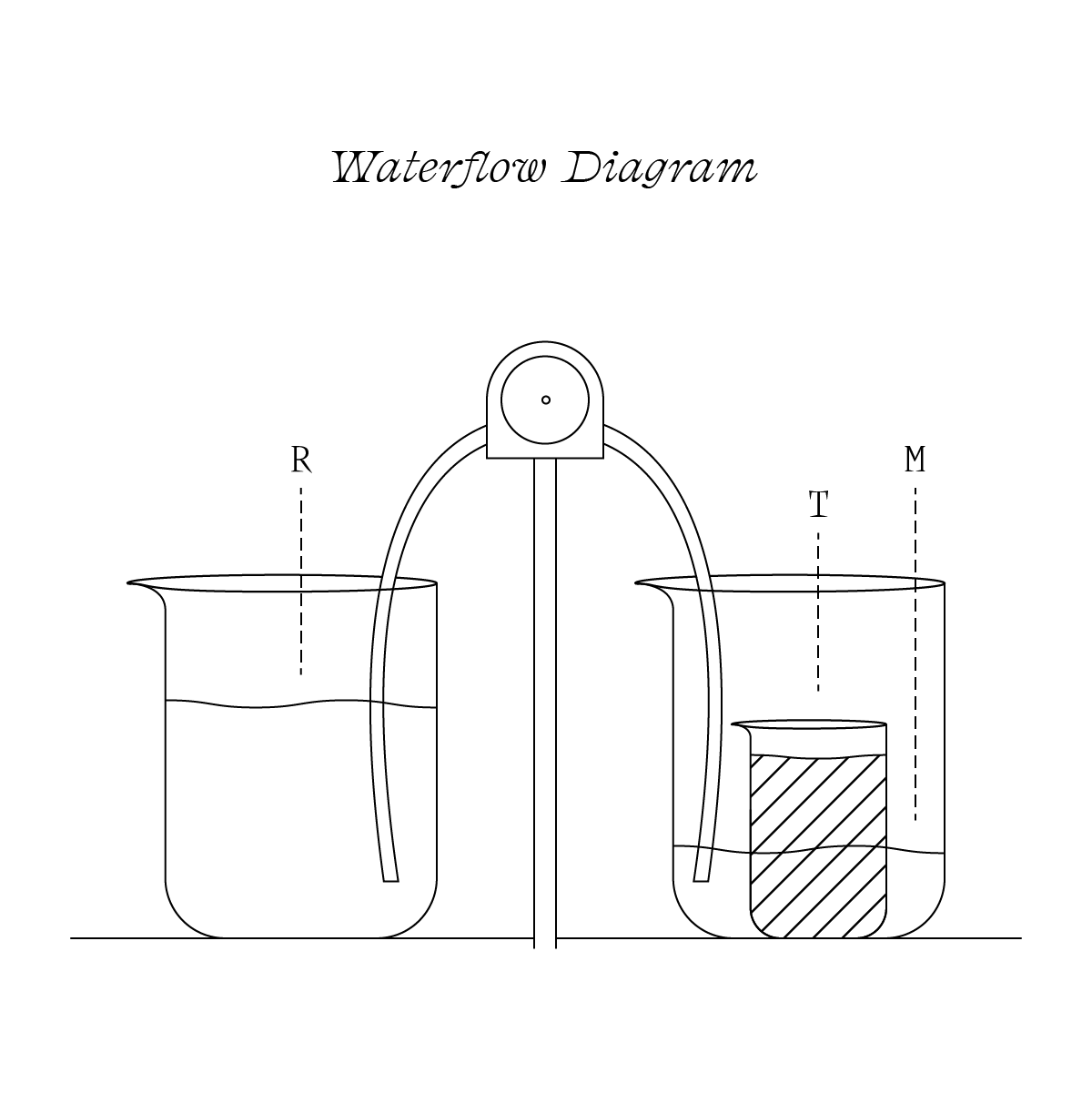
The work hinges on a sculptural component consisting of two beakers that serves as a metaphor for the levels of ice on the planet. The beaker on the left begins with 600ml of water, representing the available water supply on the planet (R for ‘reservoir’). The beaker on the right begins empty and represents the glacial melt (M for ‘melt’). Nested within M is a beaker of 150ml red-dyed water, which represents the conglomerate tipping points of climate change (T for ‘tipping point’). A peristaltic pump exists in between the two beakers with silicon tubing that transfers water from one beaker to another based on the social dynamics of the spatial environment.
As participants enter the space, the system monitors the number of individuals in the installation’s vicinity, serving as a proxy for urbanization. Similarly, the system monitors total audible volume input from participants, serving as a proxy for noise pollution. Both of these inputs have been calibrated at the start of the exhibition such that deviations from the current state impact the system accordingly. As urbanization and noise pollution values captured by the system exceed the calibrated limits, water flows from R to M accordingly. On the contrary, as urbanization and noise pollution measures fall below the threshold, water flows from M to R accordingly. The rate and amount of flow corresponds to the magnitude of deviations. Once the volume of water in M exceeds the threshold level (roughly 450ml), the installation reaches its tipping point and enters a new, undesirable regime shift. The contents of T now mix with the contents of M. As a result, any collective effort by participants in the space to combat the effects of climate change is thwarted. Participants have now reached the point-of-no-return, and attempts to move the contents of M back into R will never be quite the same.
A multimedia visualization accompanies the physical component of the installation. On the left side of the visualization, participants are able to view a visualization of the blue marble (planet Earth) in its original state. The data presented shows the original calibration state including suitable numbers of people, noise level and air quality parameters. On the right, participants see the real-time effects of the sensor input. These effects manifest in the distortion of the right-half of the blue marble as it progressively degrades into a pixelated, desaturated morass. In the center of the visualization, a climate “doomsday” clock of sorts displays the anticipated tipping point of the work to give individuals a sense of how much time remains to make meaningful changes to the trajectory of the experience.
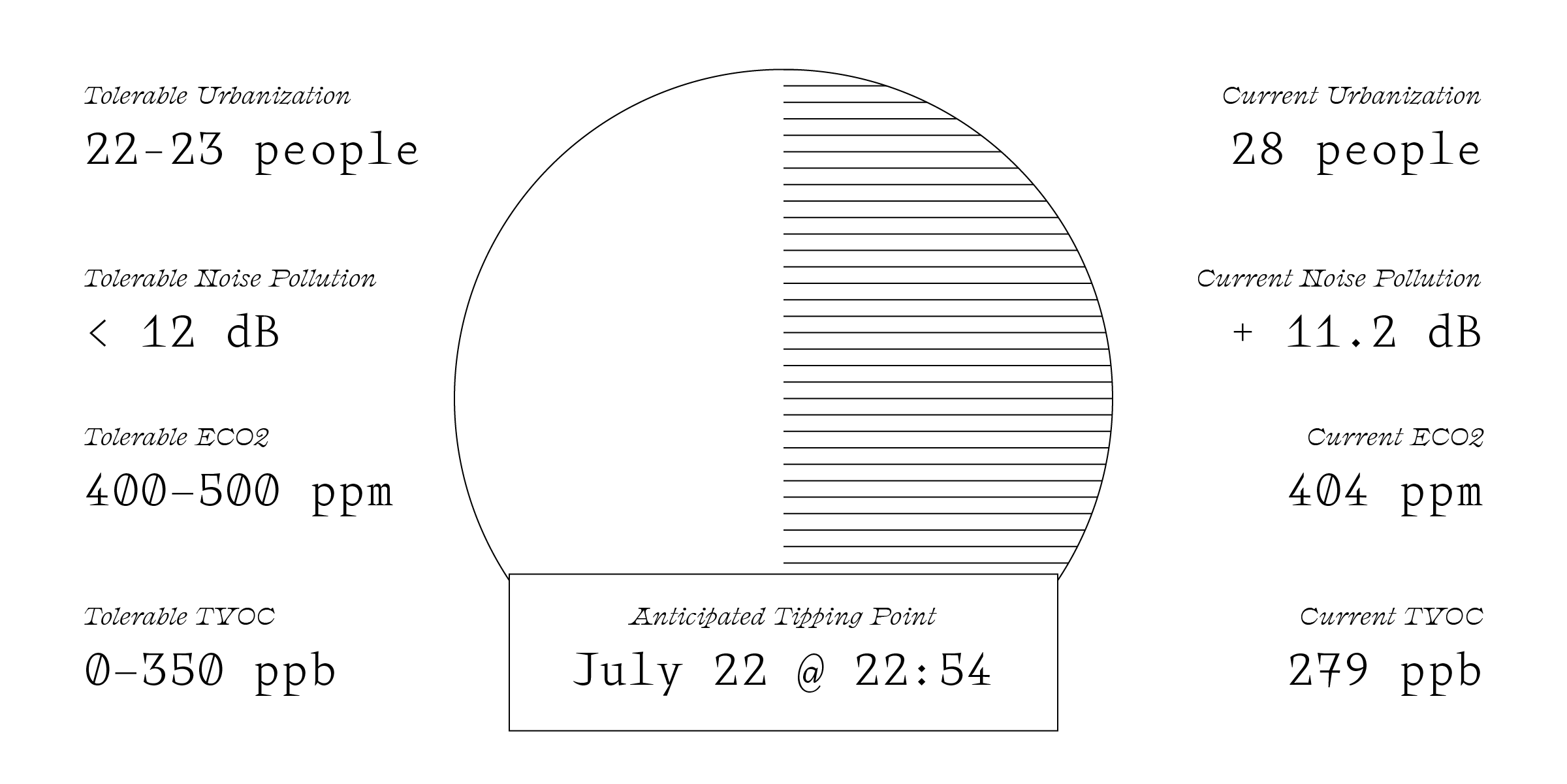
An Ecological Oracle serves as a parable of a subset of the social dynamics at play in light of combating climate change. Can participants self-organize in both the short-term and the long-term in order to not overwhelm the system? How much do individual changes affect the greater whole? What types of collaborations or conflicts will ensue as participants attempt to understand how various inputs affect the system? Will participants try to account for future generations in order to allow them to experience the system? These questions are not unique to the microcosmic experience of this work—the planet and its constituent parts need to address these questions thoughtfully in order to mitigate the deleterious effects of climate change.
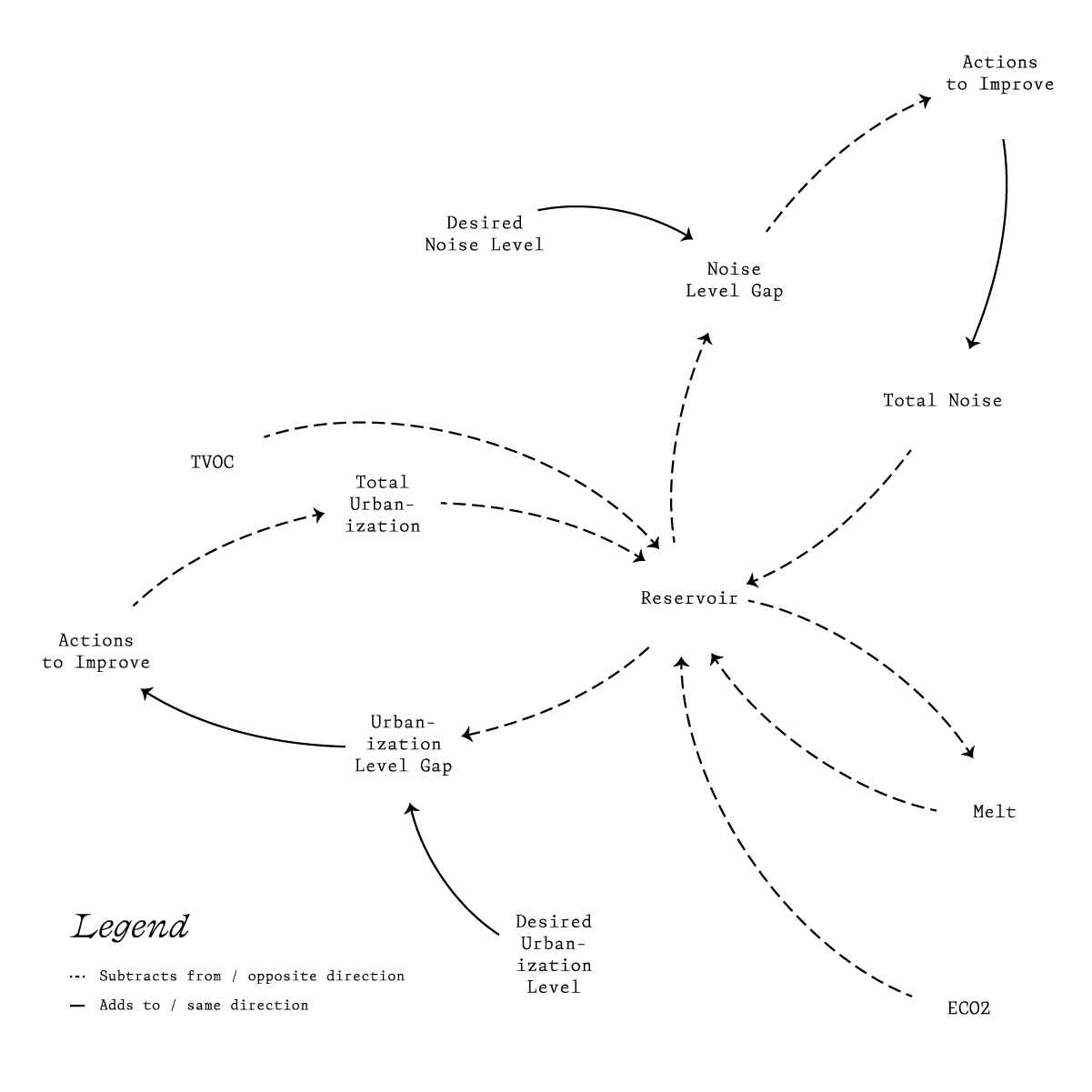
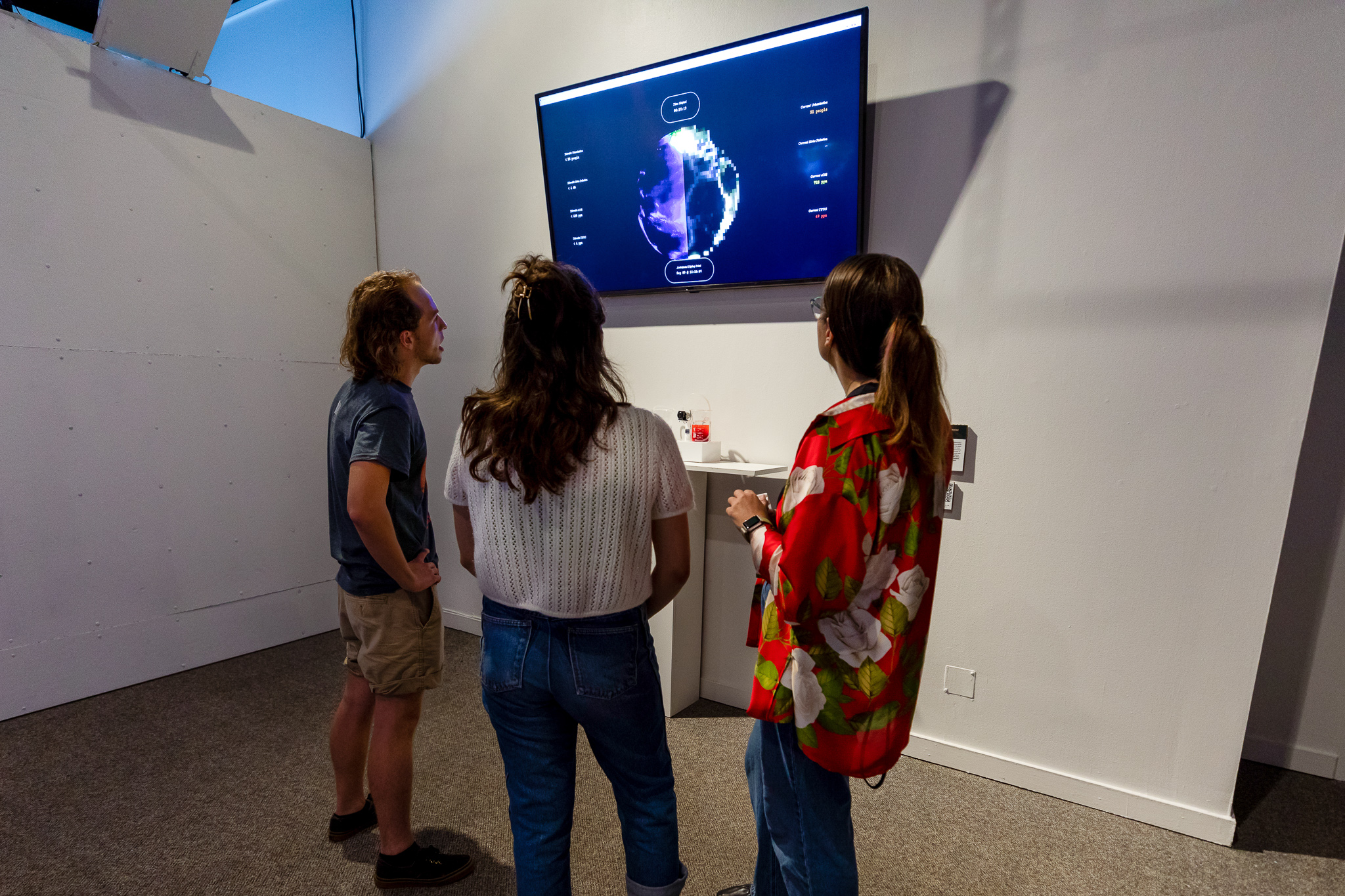
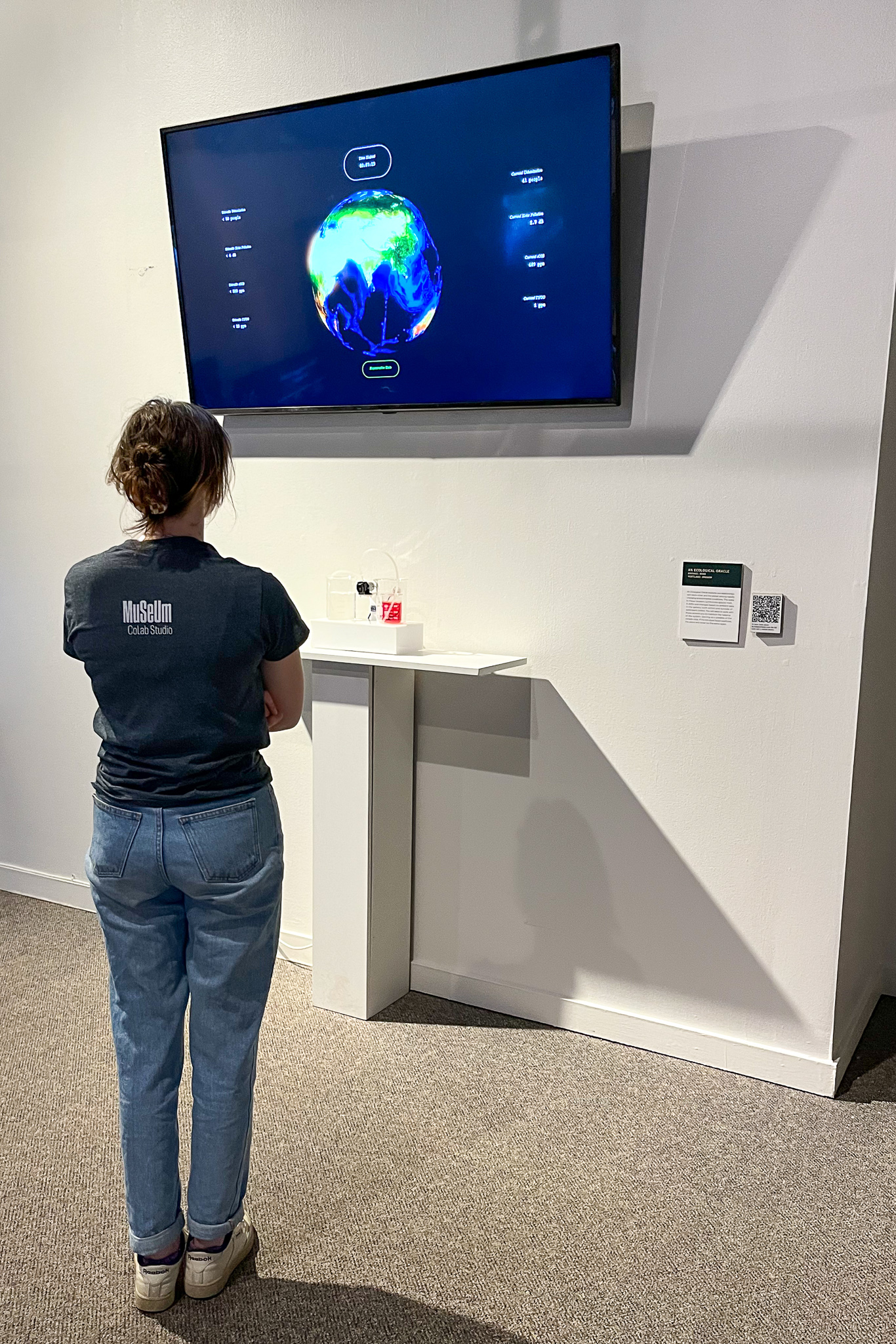
References
[1] Nicola, Maria, Zaid Alsafi, Catrin Sohrabi, Ahmed Kerwan, Ahmed Al-Jabir, Christos Iosifidis, Maliha Agha, and Riaz Agha. “The socio-economic implications of the coronavirus pandemic (COVID-19): A review.” International journal of surgery 78 (2020): 185-193.
[2] Le Quéré, Corinne, Robert B. Jackson, Matthew W. Jones, Adam JP Smith, Sam Abernethy, Robbie M. Andrew, Anthony J. De-Gol et al. “Temporary reduction in daily global CO 2 emissions during the COVID-19 forced confinement.” Nature climate change 10, no. 7 (2020): 647-653.
[3] Fisher, Mark. Capitalist realism: Is there no alternative?. John Hunt Publishing, 2009.
[4] IPCC, 2021: Climate Change 2021: The Physical Science Basis. Contribution of Working Group I to the Sixth Assessment Report of the Intergovernmental Panel on Climate Change[Masson-Delmotte, V., P. Zhai, A. Pirani, S.L. Connors, C. Péan, S. Berger, N. Caud, Y. Chen, L. Goldfarb, M.I. Gomis, M. Huang, K. Leitzell, E. Lonnoy, J.B.R. Matthews, T.K. Maycock, T. Waterfield, O. Yelekçi, R. Yu, and B. Zhou (eds.)]. Cambridge University Press, Cambridge, United Kingdom and New York, NY, USA, In press, doi:10.1017/9781009157896